Will make your rice tasty! Introducing Kyo-tsukemono!
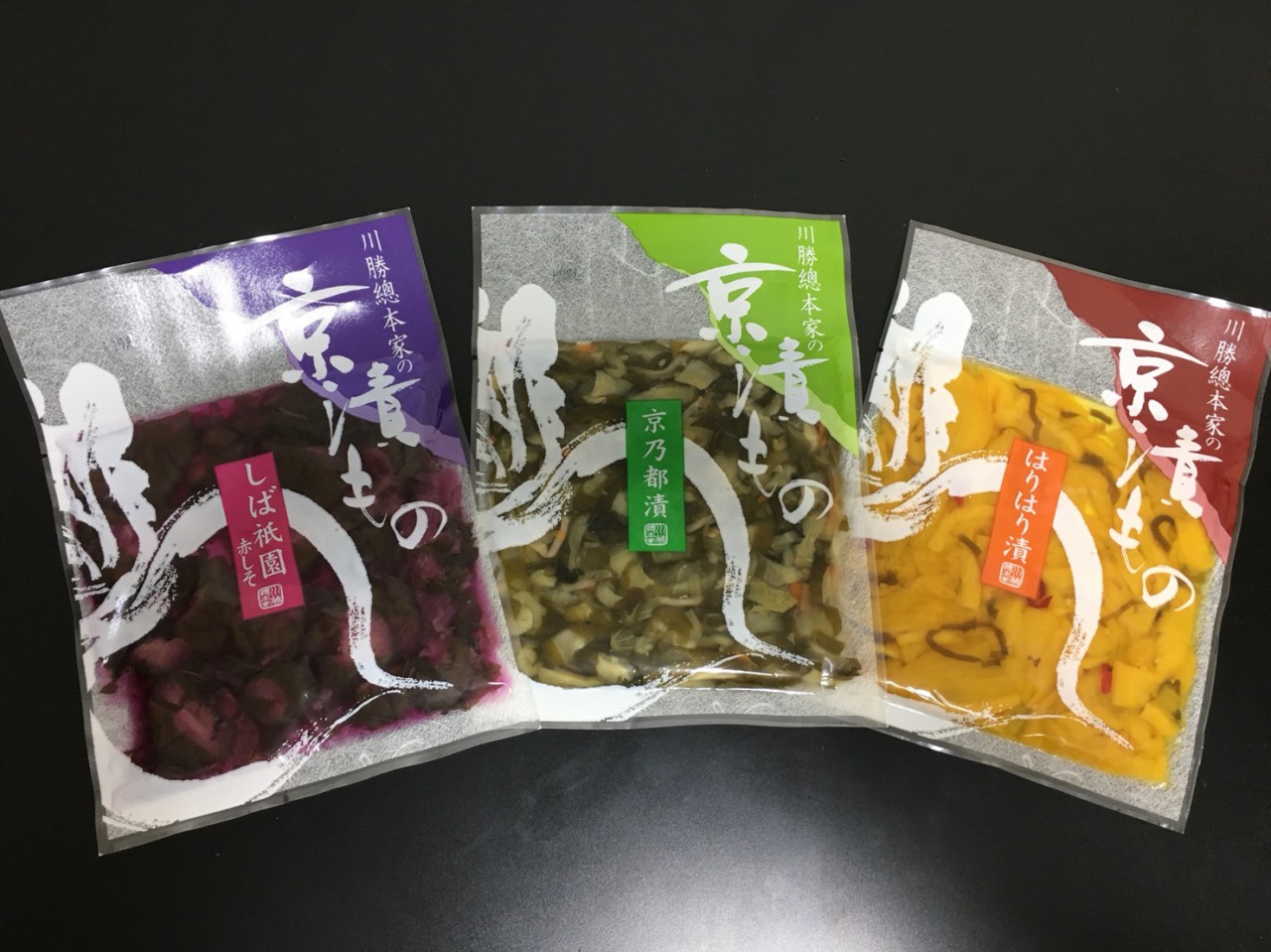
Have you ever heard of tsukemono?
Tsukemono (pickled foods) are foods that have been pickled in a variety of ingredients like salt, vinegar, and sake lees in order to add flavor and improve preservability.
Since most Japanese dishes come with pickled side dishes, there are many opportunities to try them when you visit Japan.
That being said, this time, I will introduce you to tsukemono you can buy at the supermarket!
Kawakatsu Honpouka’s Kyo-tsukemono
Kawakatsu Honpouka is a long established pickled foods store that manufactures and sells Kyoto tsukemono for nearly a century.
Kyo-tsukemono are tsukemono made from vegetables collected in Kyoto.
Shiba Gion: Red Perilla Leaves
First, I will introduce you to “Shiba Gion: Red Perilla Leaves” (Shibazuke).
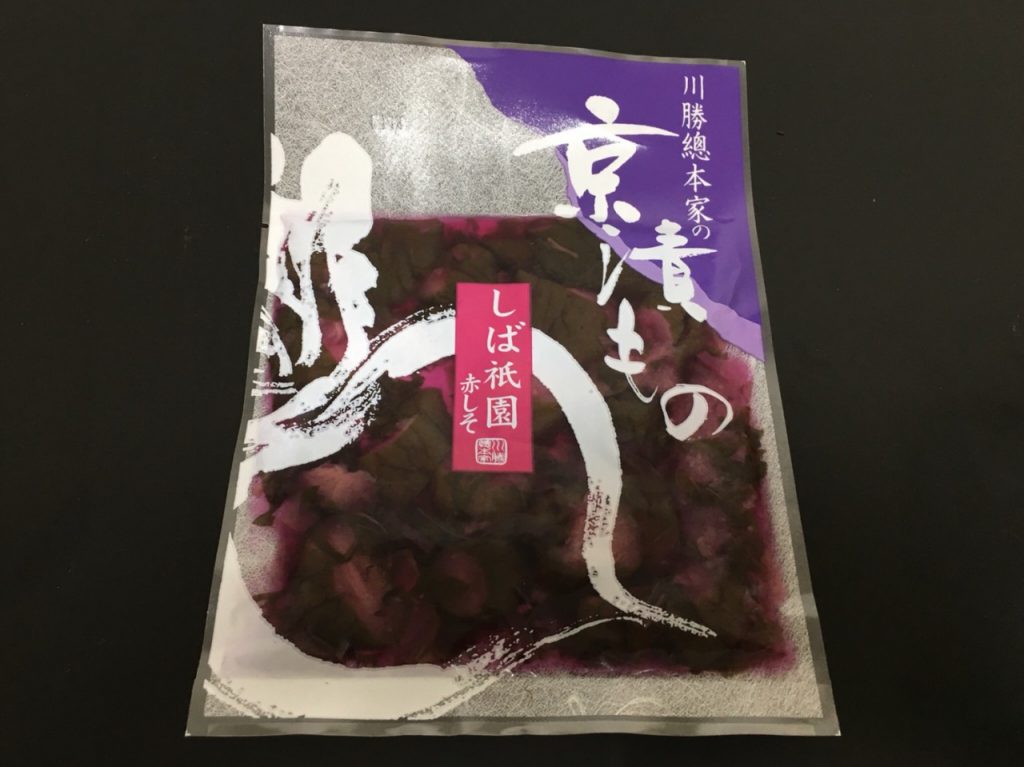
324 yen (tax included)
Shibazuke are traditional pickled dishes in Kyoto made from eggplant, cucumber, red perilla leaves, and salt.
When you open the bag, you can smell the perilla leaves.
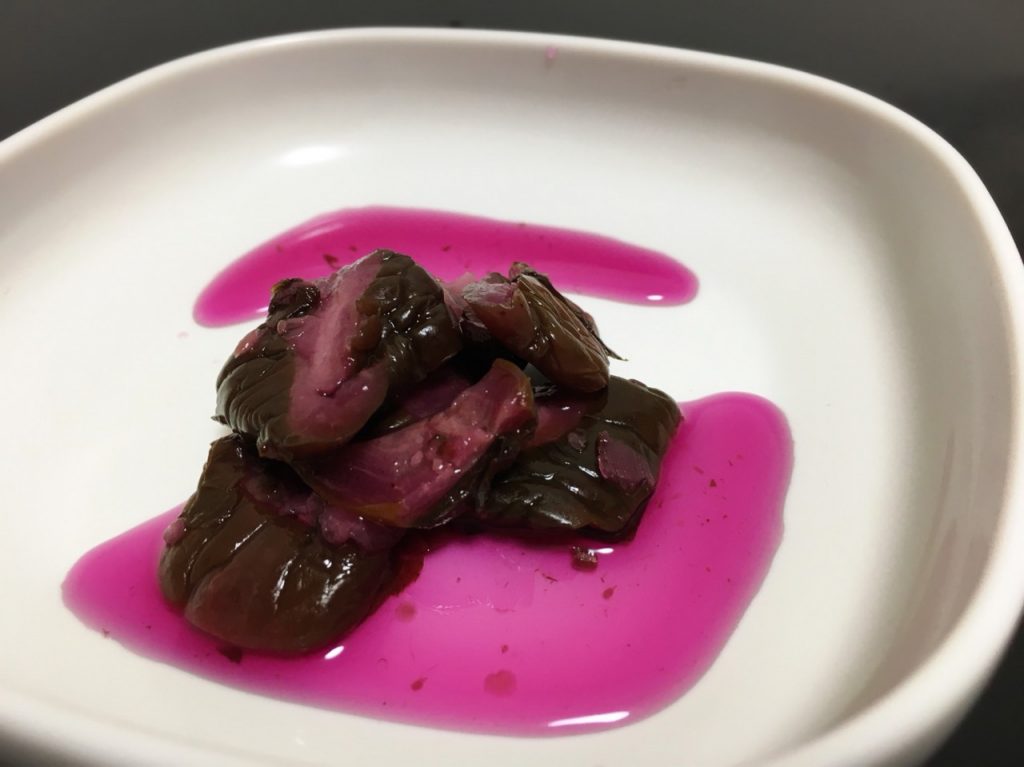
The flavors of the perilla leaves are marinated in the eggplant and cucumber, and the more you chew, the more you can taste its flavors.
The texture is nice, and it makes a nice crunch when you bite into it.
It is quite acidic, salty, and has a very strong taste.
When you eat it with rice, the acidity of the pickled ingredients complements the sweetness of the rice!
Shiba Gion will last for about two and a half months.
Kyounomiyakozuke
Next, I will introduce “Kyounomiyakozuke.”
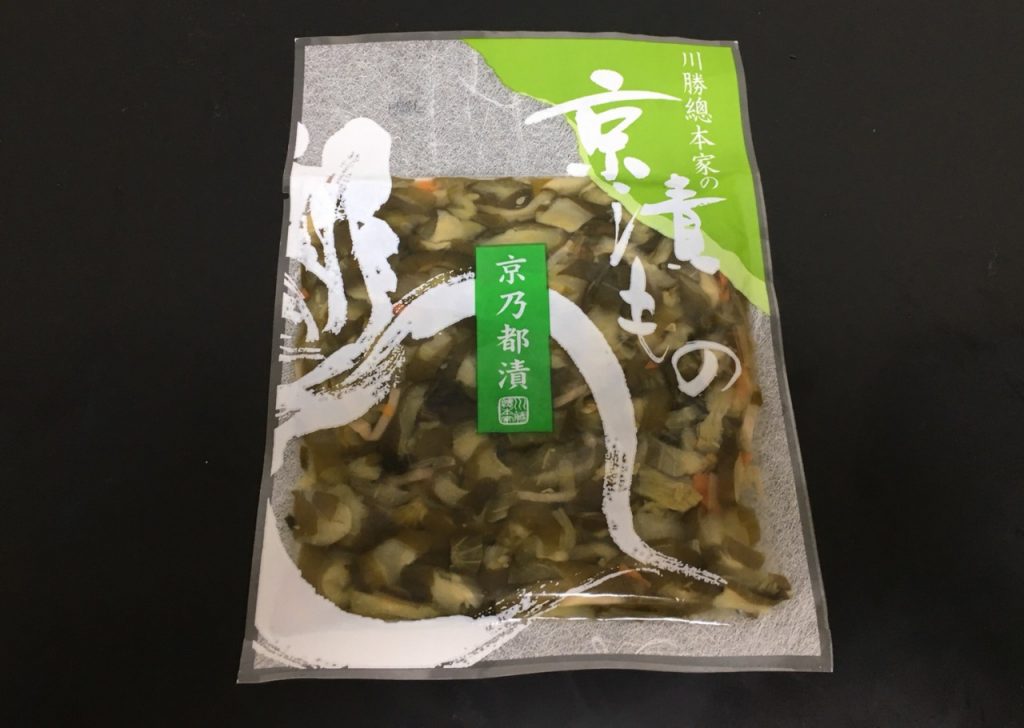
324 yen (tax included)
Kyounomiyakozuke are sliced cucumbers, mibuna mustard greens, and carrots seasoned with soy sauce.
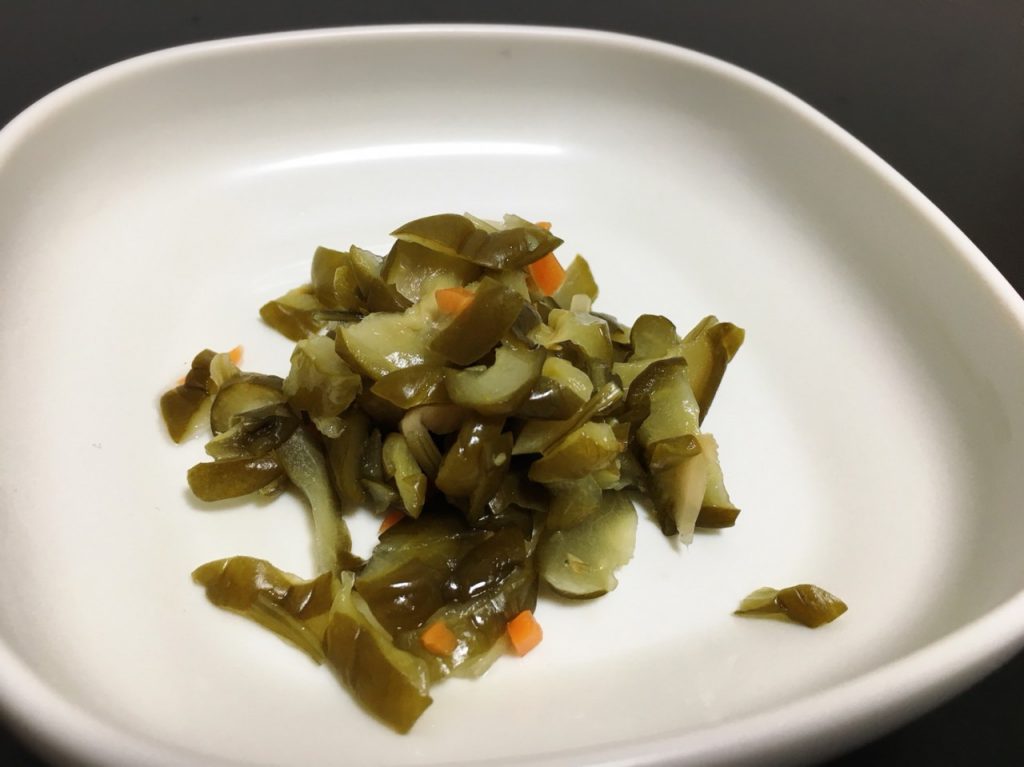
The colors of the green cucumbers and orange carrots are beautiful.
With a slightly sour scent, you can smell some ginger too.
Because kyounomiyakozuke are salty, they go very well with rice.
With a nice, crispy texture, they make nice sounds when you bite into them.
Kyounomiyakozuke will last for about three and a half months.
Hariharizuke

324 yen (tax included)
Kyounomiyakozuke are sliced cucumbers, mibuna mustard greens, and carrots seasoned with soy sauce.

The colors of the green cucumbers and orange carrots are beautiful.
With a slightly sour scent, you can smell some ginger too.
Because kyounomiyakozuke are salty, they go very well with rice.
With a nice, crispy texture, they make nice sounds when you bite into them.
Kyounomiyakozuke will last for about three and a half months.
Hariharizuke
Lastly, I will introduce “Hariharizuke.”
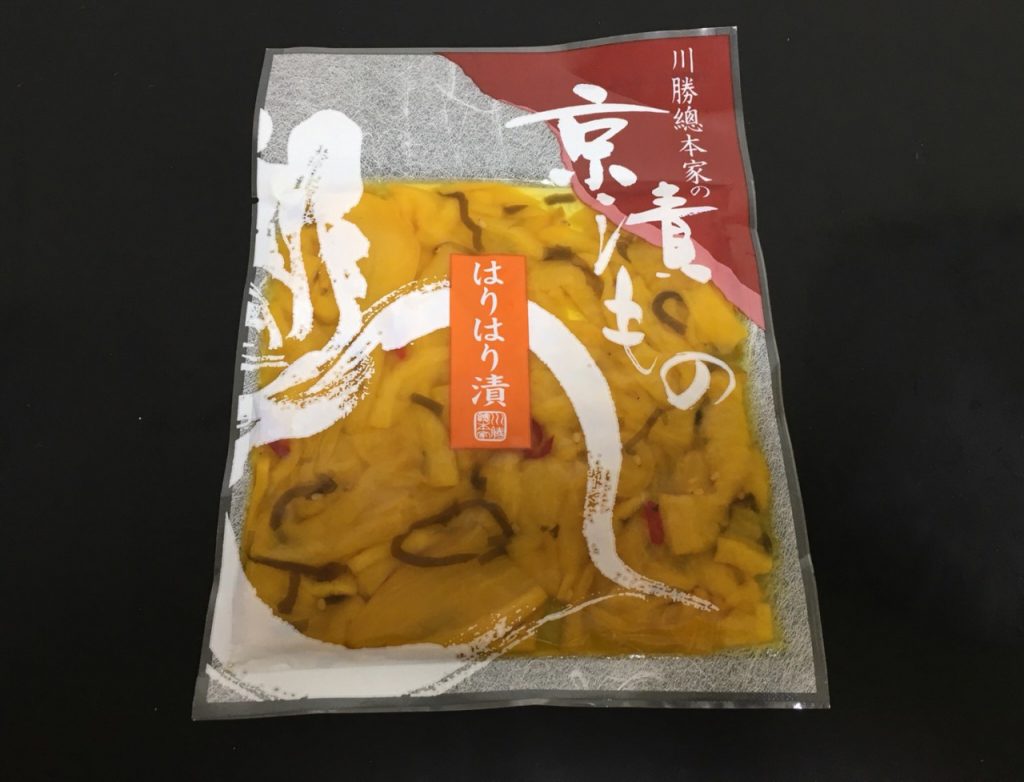
378 yen (tax included)
Hariharizuke are dried radishes pickled with ginger and kombu kelp with a sweet-spicy flavor.
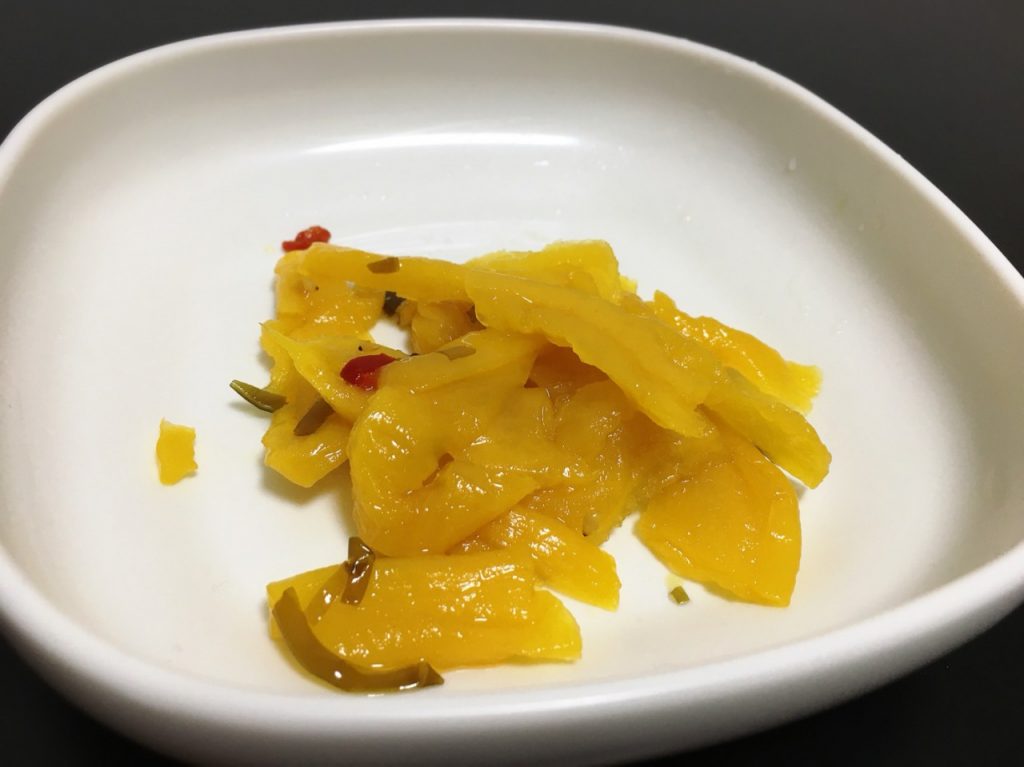
It smells sour, but it does not taste sour. It tastes sweeter compared to the Shiba Gion and Kyounomiyakozuke, but because of the spicy peppers, there is a spicy aftertaste.
There is sweetness inside the saltiness, and you can taste the slight flavors of ginger as well.
The hariharizuke’s saltiness will help bring out the sweetness of the rice too!
Hariharizuke will last about two months.
And that was an introduction to Kawakatsu Honpouka’s Kyo-tsukemono that can be purchased at the supermarket.
On top of having a variety of flavors (as well as acidity and sweetness), tsukemono will help make your rice tastier.
When you want to enjoy a Japanese meal, please enjoy it with some tsukemono!
(Kawakatsu Honpou HP: https://www.kawakatu.com/index.php)
Written by yui